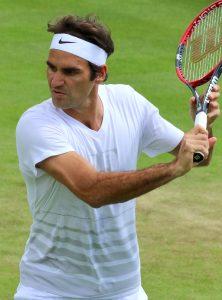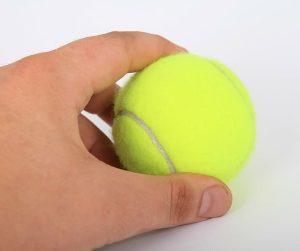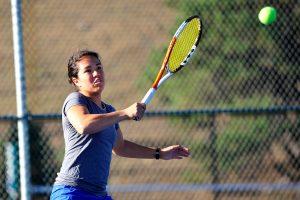We may earn money or products from the companies mentioned in this post.
Introduction

Tennis, known as the “sport of a lifetime,” is much more than just a game It is a sport that offers numerous physical, mental, and social benefits Whether you’re a beginner or an experienced player, tennis has something to offer for everyone
Physical Benefits
Engaging in regular tennis matches or practice sessions can lead to significant physical improvements Tennis involves constant movement, which helps improve cardiovascular fitness and stamina The quick bursts of sprints during rallies enhance speed and agility Additionally, playing tennis requires using various muscle groups, leading to improved strength and coordination
Mental Benefits
Tennis is not only physically demanding but also mentally challenging The strategic nature of the game requires players to think quickly and make split-second decisions This helps improve cognitive function, including problem-solving skills and decision-making abilities Moreover, playing tennis regularly can reduce stress levels and promote mental well-being
Social Benefits
Tennis is often played in pairs or teams, making it an excellent sport for social interaction Whether you’re playing doubles with friends or participating in tournaments, tennis allows you to connect with others who share your passion for the game It provides opportunities to build friendships, develop teamwork skills, and foster a sense of community
Importance of Age in Starting Tennis

The age at which one starts playing tennis can have a significant impact on their developmental factors as well as long-term success in the sport
Developmental Factors
Starting tennis at a young age can be beneficial for children’s overall development Tennis helps improve hand-eye coordination as it requires precise timing and control when hitting the ball over the net Additionally, learning tennis early on promotes balance and agility, which are essential skills in various sports and daily activities
Long-term Success
While it is never too late to start playing tennis, beginning at a younger age allows for more time to develop the necessary techniques and strategies Younger players have the advantage of a longer learning curve, enabling them to build a solid foundation in terms of skills and mental resilience However, regardless of age, dedication, practice, and passion can lead to success on the tennis court
Factors to consider when choosing the ideal age to start tennis

Tennis is a sport that requires a combination of physical, cognitive, and emotional skills When deciding on the right age to introduce your child to tennis, it’s important to consider their overall readiness Here are some key factors to keep in mind:
Physical readiness
1 Coordination and balance development: Tennis requires quick movements and precise footwork Starting at an early age can help children develop coordination and improve their balance, which are essential for executing shots effectively
2 Muscle strength and endurance: Tennis demands physical stamina and strength in order to sustain long rallies and powerful shots Waiting until your child has developed sufficient muscle strength will help them avoid injuries and enjoy the game more
Cognitive skills development
1 Learning ability and understanding of rules: Tennis has its own set of rules that players must learn and follow The ideal age to start is when children have developed the cognitive abilities necessary to understand these rules, such as scoring, court boundaries, and basic strategies
2 Decision-making abilities: Tennis involves making split-second decisions during gameplay, such as where to place a shot or how to react to an opponent’s move A certain level of cognitive maturity is needed for players to make quick decisions under pressure
Emotional maturity
1Self-discipline and motivation: Tennis requires dedication, discipline, and consistent practice over time in order to improve skills and achieve success Starting at an appropriate age ensures that children have developed the self-discipline needed to stick with the sport through challenges
2Dealing with pressure, winning, and losing: Tennis can be mentally demanding as players face pressure from competitions, the desire to win, and the disappointment of losing Children who have developed emotional maturity are better equipped to handle these ups and downs with resilience and a positive mindset
Age recommendations for different aspects of tennis training

Tennis is a sport that can be enjoyed by people of all ages, but when it comes to training and development, there are certain age recommendations to consider These recommendations take into account the physical, cognitive, and emotional development of children at different stages of their growth
Starting with informal play at a young age (3-5 years old)
At this early stage, it’s all about introducing basic motor skills through fun games and activities Children in this age group are still developing their hand-eye coordination and overall body control By engaging them in simple tennis-related games, we can help them develop these essential skills while igniting their interest in sports activities early on
Beginning formal lessons (6-8 years old)
Once children reach the ages of 6 to 8, they are ready to start learning the fundamental techniques of tennis This includes teaching them proper grip, stance, and swing technique To make the learning process enjoyable and accessible for young players, mini-tennis is often introduced Mini-tennis uses modified courts, nets, racquets, and balls that are better suited for their size and strength
Junior programs (9-12 years old)
As children progress into the 9 to 12-year-old age range, they enter a phase where advanced skill development becomes crucial Coaches focus on teaching strategies and footwork techniques that will enhance their performance on the court Additionally, encouraging friendly competition through local tournaments helps foster a sense of sportsmanship and allows young players to apply what they have learned in real match situations
High-performance training programs (13+ years old)
Teenagers aged 13 and above who demonstrate a high level of commitment and talent may be eligible for high-performance training programs These programs go beyond technical skills, emphasizing fitness, nutrition, mental preparation, and overall athletic development Participants in these programs may also have the opportunity to travel and compete in regional, national, and even international tennis events
By following age recommendations for different aspects of tennis training, coaches and parents can ensure that young players receive appropriate guidance tailored to their developmental stage This approach not only promotes skill progression but also helps create a positive and enjoyable experience for children as they pursue their tennis journey
Additional considerations for parents when helping their child start tennis

When it comes to introducing your child to the world of tennis, selecting the proper equipment is crucial Not only does this ensure their comfort and safety, but it also sets them up for success on the court One important factor to consider is choosing age-appropriate racquets These racquets are specifically designed with length and weight considerations in mind, making it easier for young players to handle Additionally, parents should familiarize themselves with the different types of grips available and make sure to find a racquet that fits their child’s hand comfortably
In addition to finding the right racquet, parents should also consider using age-appropriate balls Foam, red, orange, and green dot balls are commonly used for younger players as they have different levels of compression and bounce compared to regular tennis balls These specially designed balls help children develop their skills while allowing them to enjoy the game at a level suitable for their abilities
Choosing a suitable coach or tennis program
Another crucial consideration is selecting a suitable coach or enrolling your child in a reputable tennis program A coach’s experience and qualifications play a significant role in shaping your child’s development as a player Look for coaches who possess relevant certifications and have experience working with young players
Additionally, consider the goals of the tennis program you choose Some programs focus on recreational play, aiming to foster enjoyment and skill development at a non-competitive level On the other hand, there are programs that emphasize competition and prepare players for tournaments or school team tryouts Understanding these goals will help you align your child’s aspirations with an appropriate training environment
Maintaining a balance between tennis and other aspects of life
While nurturing your child’s passion for tennis is important, it’s equally vital to maintain a balance between tennis and other aspects of their life Academic performance should always remain a priority, so ensure that your child has enough time for studying and completing assignments Encourage them to manage their time effectively to avoid any negative impact on their education
Furthermore, don’t overlook the significance of social interactions Encourage your child to engage in activities with friends and participate in social events outside of tennis This will help them develop important social skills and prevent them from becoming too consumed by one aspect of their life
Lastly, allow your child to explore other extracurricular activities alongside tennis This exposure to different hobbies and interests will not only enhance their overall development but also provide opportunities for cross-training that can benefit their tennis game in unexpected ways
Useful Links

What Is The Best Age To Start Tennis?
At what age can my child start tennis lessons?
What Age Should Kids Start Playing Tennis?
What is the Best Age to Start Playing Tennis?
What is the best age to start tennis lessons for kids?
What is the Ideal Age for Children to Begin Playing Tennis?
How Old Should You Be to Start Playing Tennis?
At what age can children start learning to play tennis?
What Age Is Too Late to Start Tennis?
What is the Best Age to Start Tennis Lessons for Kids?
Tennis Instructions | What Age Should Kids Start Tennis?
Tennis for kids – best age, benefits, cost, choosing an academy
What Age To Start Tennis Lessons As A Kid?
10 & UNDER PARENT FREQUENTLY ASKED QUESTIONS
What Age Should You Start Tennis?
When Should Your Child Enter Competitive Junior Tennis
What Is The Best Age To Start Learning Tennis
How to get your child playing kids tennis
Age to start tennis






